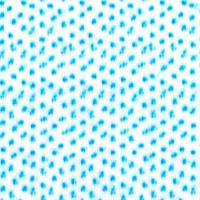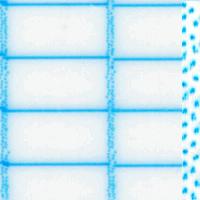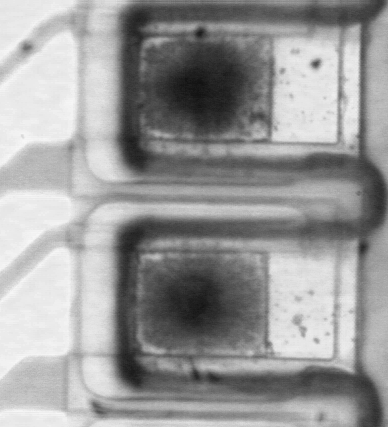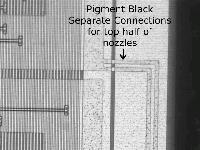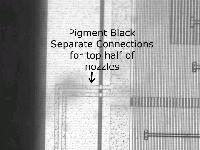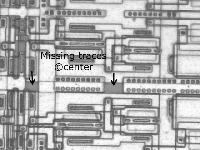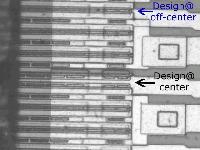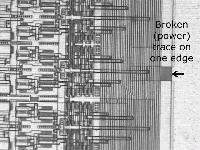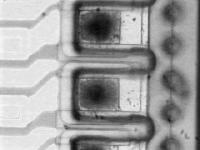- Joined
- Jun 16, 2006
- Messages
- 3,645
- Reaction score
- 85
- Points
- 233
- Location
- La Verne, California
- Printer Model
- Epson WP-4530
Wow, Grandad35, awesome work!Grandad35 said:This image shows a surprising result - the 5 pl and 1 pl nozzles are located side-by-side in the same bank of nozzles. There are two duplicate nozzles sets for magenta and cyan, giving 256 large and 256 small nozzles for each color. I guess that this makes sense, since it keeps the same ink flow in each channel. The "heaters" are the same size for both sets of nozzles. Note that the 1 pl nozzles are located between the 5 pl nozzles.
Check out this thread for an in-depth discussion of the issue of why the nozzles on each side of an ink channel contain two different sized nozzles:
http://www.nifty-stuff.com/forum/viewtopic.php?pid=10554#p10554
I think our brilliant contributor Defcon2k figured it out, if you read all the way to the end, although I haven't had time to investigate it further to determine for sure if he is right.
This is done to overcome an unavoidable problem in inkjet printers which is that when a nozzle is fired one time, the ink comes out in about three droplets each smaller than the previous one. If the nozzle were aimed straight down, it would create three separate dots, but by aiming the nozzle at an angle back away from the direction of travel, the drops have no horizontal velocity and end up on top of one another, creating a single dot on the page.
Now by having two sets of nozzles, one aimed in one direction and the other aimed in the opposite direction, you can fire one set when the head is traveling to the left and the other set when the head is traveling to the right, thus giving you nice clean dots.
The nozzle check is done with the head traveling in just one direction so half the firings result in lots of extra smaller dots appearing on the page.


